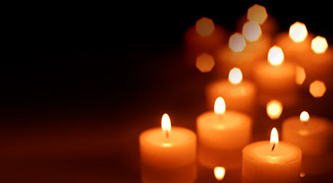Tishah B’Av, observed on the 9th (tishah) of the Hebrew month of Av, is a day of mourning the destruction of both ancient Temples in Jerusalem. For many in modern times, we understand Tishah B’Av as a day to remember the many tragedies that have befallen the Jewish people throughout history and to reflect on the suffering that still occurs in our world. Tishah B’Av is not a holiday often observed by many in the Reform community, but in these uncertain and challenging times in our world, it feels appropriate to focus on this theme.
Just as other Jewish holidays are not only about history, neither is Tishah B’Av. As we reflect on the history of this holiday, we see how Judaism brings history and spirituality together so that future generations can continue to find meaning. Many of us see Hanukkah as a complex holiday that includes the retelling of history, a celebration of freedom, and also a religious miracle. So too can we see Tisha B’Av as a complex and nuanced observance. This holiday allows us to reflect on a remembrance of the calamities that have befallen our people throughout history, to recognize and mourn the tragedies in our current world, and to remember that it is our role, as Jews, to take responsibility for helping to repair the world.
An additional interpretation for us as modern Jews is that we work and pray, as our ancestors did, to look toward a brighter and more hopeful future for ourselves and the world. How can we take the meaning of this lesser known holiday into our current lives?
At Temple Shalom, we are guided by Tikkun Olam, repairing the world, and G’milut Chasidim, acts of loving kindness. We do this work in ways big and small: learning and growing in our social justice efforts, creating an active and vibrant Caring and Social Action Committee, marching for equality in the Pride parade, engaging in interfaith outreach, participating in trail clean-up, regularly hosting donation campaigns for local charities, continuing tremendous work with refugee resettlement, hosting blood drives, and so much more. We reach out, come together, participate in each other’s lives, and extend our help to those we can. We observe, pray, mourn and celebrate together, and we work, every day, to continue to repair the world.
In our first letter to you as co-presidents, we offered our plan for Kehillah, building community. As we consider Tisha B’Av, and the high holidays that are fast approaching, we ask our community — how can we continue this effort while focusing on these very lessons? In her weekly “Taste of Torah,” our friend Rabbi Caroline Sim of the Institute for Southern Jewish Life, writes about the Haftarot of Admonition, which we read in the three weeks leading up to 9 Av. It describes the many recriminations and lament toward our Jewish ancestors for moving away from G-d. As Rabbi Sim interprets, the meaning in these verses for modern Jews might be seen as a trend in our society to move away, not only from G-d, but from a commitment to Jewish community.
So we leave you with Rabbi Sim’s wise words:
Judaism is more than a religious practice. Judaism is a culture and a community. It is meant to be celebrated and shared. Amongst a group of people who might not have any other reason to come together, Jewishness unites them … whether by choice or by birth, by practice or situation, environment, or any other method or pathway — (Jewishness) can be and is a uniting force that inherently strengthens all of us who choose to be a part of it.
We hope you will join us as we come together as a community to do the work of repairing the world and continuing to perform actions of loving kindness.
Erin Cohen and Melissa Woods

